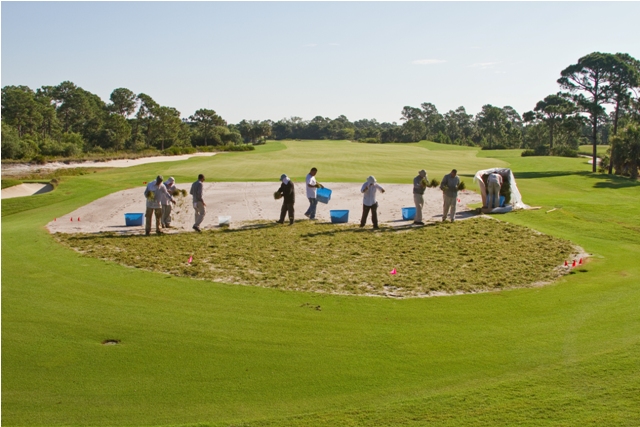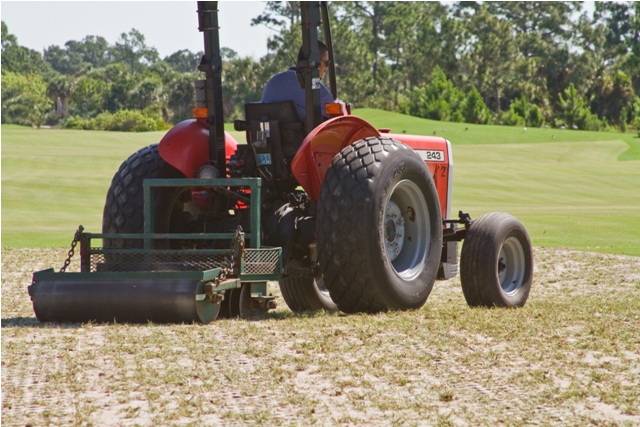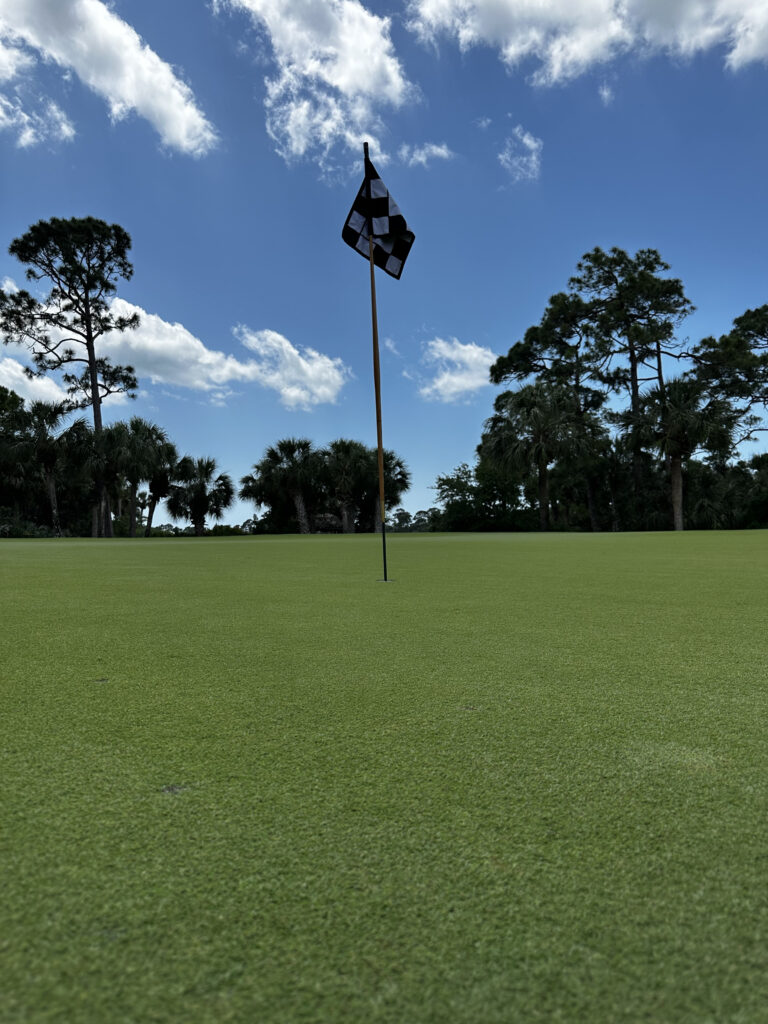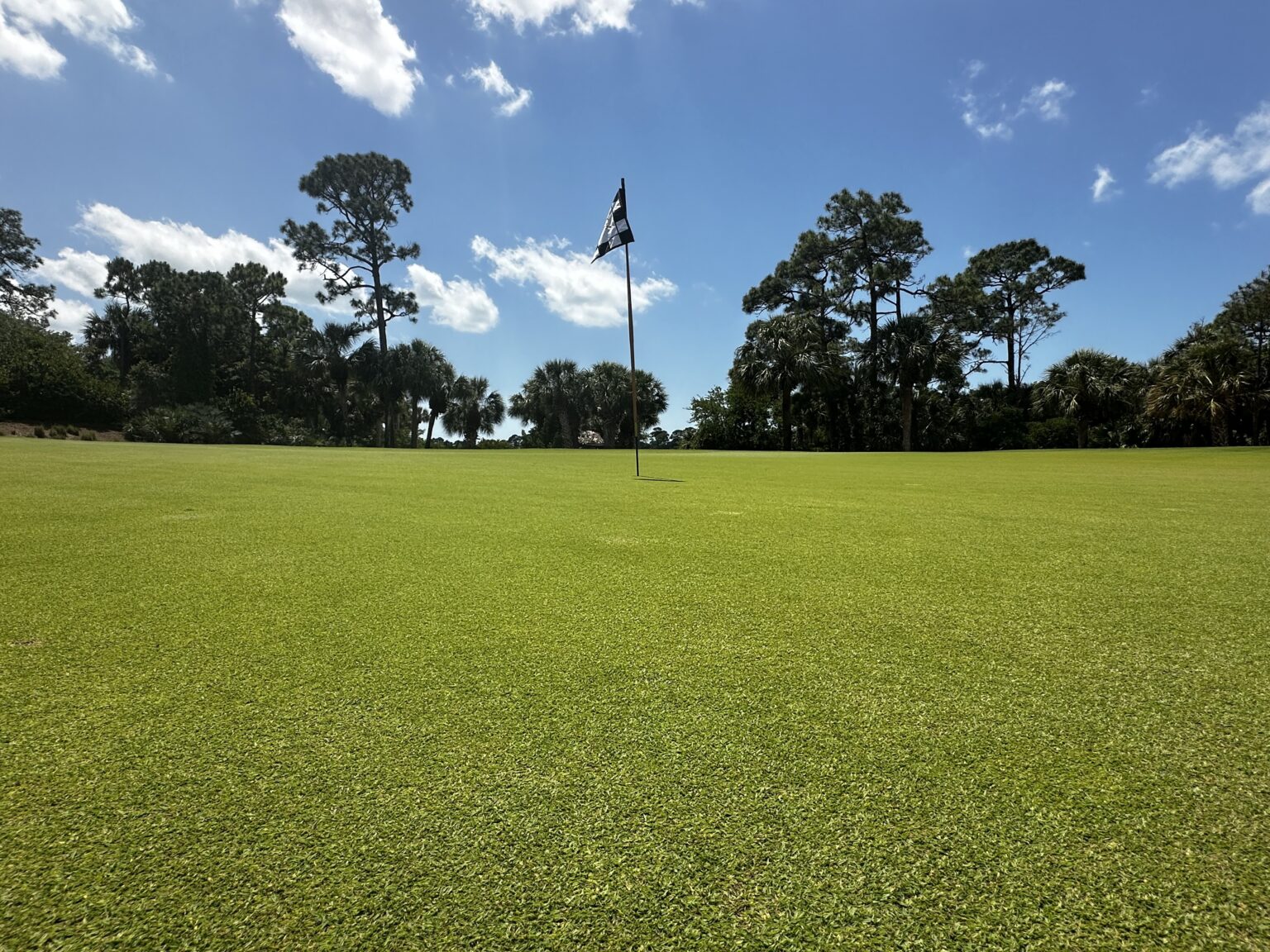The Old Collier Golf Club Continues to Sing Platinum TE’s Praises
In Naples, Florida, The Old Collier Club honors the traditions of the game by providing its members with an exceptional golfing experience. The 18-hole championship course, designed by Tom Fazio, provides equal measures of challenge and beauty amidst saltwater marshes and mangroves populated with local wildlife. Besides the sanctuary-like environment and the nostalgia of the single-bag caddy system, The Old Collier Club also earns the honor of being the first golf course to feature Platinum TE Paspalum.
Todd Draffen, Old Collier’s current director of agronomy, is as happy with the turfgrass today as he was when the course began the conversion. Serving as the assistant superintendent in 2006 when Platinum TE was first planted, Draffen was on hand to see the brand new variety trialed on the short game green. Now, Platinum TE is the turfgrass on all 18 greens, the two practice greens, the chipping greens, the driving range tee, and five regular course tees, with plans in the works to convert the remaining tees.
“It’s one of the best turfgrasses there is,” said Draffen. “And the very best as far as paspalums. Color, density, recoverability – it has it all.”
“It’s one of the best turfgrasses there is. And the very best as far as paspalums. Color, density, recoverability – it has it all.”
Todd Draffen, Director of Agronomy at The Old Collier Golf Club
And Draffen speaks from experience. Before pioneering Platinum TE at Old Collier, the course featured SeaIsle Supreme greens and SeaIsle 2000 before that.
Tim Hiers, who was the director of agronomy at Old Collier in 2006, remembers the immediate difference between Platinum TE and its predecessors.
“When Platinum TE was first discovered and available, we had the very first green in the world on our short game area. It looked so great that I had the idea of taking a plug, putting it in the green on number one, and showing our CEO,” said Hiers. “You could be legally blind and still see the difference. Our CEO asked why we couldn’t do the rest of the greens like this, and I said, ‘We can.’”


The same characteristics that stood out in 2006 are still growing strong at Old Collier today.
“The color, density, and recoverability are all amazing,” said Draffen. “When I get new people joining the crew, they are amazed at what this turfgrass can do, and our members say the appearance of the greens is far superior to any club in town.”
Hiers recalls working with Platinum TE at the beginning and noticing the color, density, and upright growth pattern.
“Our Supreme greens were not bad, but Platinum TE was such an improvement,” said Hiers. When we put the plug in the green, you could tell the difference from 60 feet away. And the closer you got, the better it looked.”
In addition to appearance, performance also stands out – then and now.
“We were able to be more aggressive with the Platinum TE than we ever could be with SeaIsle Supreme,” said Hiers. “We were able to get better green speeds and maintain them. We could get to 12.6 [on the Stimpmeter] without stressing the grass.”
Draffen gets the same results today. “At our last Member-Guest tournament, we got our greens [height of cut] down to 0.09 inches, and they were phenomenal. Through the majority of our high golf season, our daily [Stimpmeter] number is 11, but for tournaments, it’s more like 12. And the quality of the roll is true. There is not a wiggle of squiggle at all.”
Platinum TE scores high marks at Old Collier for its ability to handle challenging conditions as well. From the beginning, Hiers noticed the sustainability advantages of Platinum TE including salt tolerance and more.
“Platinum TE is probably the most cold tolerant warm season grass and has the best low light intensity tolerance. In addition, it can handle higher chlorine content, higher sodium, and higher bi-carbs.”
Tim Hiers, former Director of Agronomy at The Old Collier Golf Club
“Platinum TE is probably the most cold tolerant warm season grass and has the best low light intensity tolerance,” said Hiers. “In addition, it can handle higher chlorine content, higher sodium, and higher bi-carbs,” said Hiers.
“Our water quality is probably the worst in the United States, if not the world,” Draffen said. “Our TDS straight out of the well is about 8200. It mixes with groundwater, but when we are really dry, it’s basically straight well water.”
Platinum TE, with extreme salt tolerance, maintains its quality. Draffen notices the same level of performance through low light conditions.
“Year-round, Platinum TE delivers dense turf. Even during winter months, when we have the most cloud coverage, we never thin out. That is one huge attribute.”
“Year-round, Platinum TE delivers dense turf. Even during winter months, when we have the most cloud coverage, we never thin out. That is one huge attribute.”
Todd Draffen, Director of Agronomy at The Old Collier Golf Club
Platinum TE’s exceptional performance on the greens carries over to its performance on the tees, which is the reason the course is in the process of transitioning each tee to Platinum TE, as it needs renovation.
“Platinum TE performs phenomenally on the tees,” said Draffen. “We’re cutting them at 0.25 right now. I could cut them at 0.15, and they’d still perform exceptionally well. Unbelievable durability and recoverability. Our driving range tee is also Platinum TE, and the recoverability is excellent.”
As the first to adopt Platinum TE over 15 years ago, Old Collier is still reaping the benefits of this sustainable turfgrass, and Draffen continues to be impressed.
“If someone is regrassing and asks for recommendations, Platinum TE has to be it. That’s my suggestion all day long. Even if they have good water, it’s one of the best grasses out there.”


